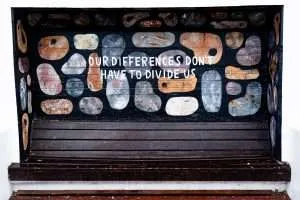What is the digital gender divide?
In a world that went virtual overnight, digital connectivity proved to be a key factor. From work to school; access to digital connectivity has proven very important for our lives. However, today while more than 52 percent of women globally remain unconnected and in the developing world, especially in South East Asian countries, 33 percent of women are less likely than men to use the internet. This digital gender divide persists even though we know the importance of digital connectivity for a country’s developmental path.
For India, long before the pandemic had wreaked havoc across the length and breadth of the globe, crippling economies, it had opined for a gradual yet steady digitization of the economy throughout the three core sectors. Though Covid-19 brought along with it an abhorrent parcel of misery for any nation, the only boon which India acquired during these challenging times was an increased adoption in digital escalation by five years, in merely two months of 2020. India has set for itself a target of reaching a US 1 trillion dollar economy by 2025, a five fold growth from US 200 million dollar in 2017-2018.
The digital necessities which cropped up during the pandemic coupled with an already existing memorandum for the ‘Digital India Campaign’ bolstered and heaved online transactions, e-learning, internet banking, online businesses etc. However, it amplified another serious vogue- the digital gender divide.
The Pandemic’s Impact
As per the Global System Form Mobile Communications Mobile Gender Gap Report Highlights, the pandemic did not necessarily negatively impact the overall gender gap in mobile internet accessibility, which has improved this year. However, report suggests that women are still being left behind in an increasingly connected world, especially in the lower middle income countries (LMIC) of Bangladesh, Nepal and Pakistan.
Indian women are now 15 percent less likely to own a cell phone having internet or with no internet facility and 33 percent less likely to access mobile internet services than men. In 2020, 25 percent of the Indian adult female population had the privilege of owning a smartphone as compared to 41 percent of adult men. Similar and even worse trends are being observed by India’s immediate neighbors.
Another red flag which can be observed among the South Asian nations belonging to the LMIC group is the fact that although women’s access to the mobile internet services has increased manifold, mobile device ownership has remained relatively flat. Despite the mobile ownership disparity gap contracting from 26 percent to 19 percent and mobile internet usage gap from 67 percent to 36 percent between 2017 to 2020, South Asia continues to have the widest digital gender gap globally. Among the Indo-Pacific, India had the widest gender gap reported in internet consumption in the recent timeline, a gender gap of 40.4 percent with only 15 percent of women accessing the internet versus 25 percent of men.
Across LMIC, women are now 7 percent less likely to own a mobile phone, which translates into 143 million fewer women owners than men. However, the gender gap in awareness about mobile internet services continues to reduce across all countries surveyed.
Why Does the Digital Gender Divide Persist?
The main reasons for such a wide disparity in mobile internet services in India include the following:
- Rural net/mobile network penetration is very low in India as compared to its urban counterpart while the density of population in rural India is very high. This combination makes it difficult for the internet service provider to deliver its services hassle free to every household. There is a rural broadband penetration of only 29 percent against the national average of 51 percent. Across states, women in rural India are less likely to own mobile phones.
- Indians have been historically plagued with extreme income and economic disparity and it has only aggravated during the pandemic. There is an income based digital divide between households in India. Given the average price for data is US $0.68 in India, estimates show that each gigabyte of mobile data costs low-income households (earning less than US $2/day) 3 percent of their monthly income as against 0.2 percent for middle income households earning in between US $10-$20 per day.
- Women have been subjected to historical injustices since the dawn of modern patriarchal civilization. It transcended its root even during the time when humanity is facing an existential crisis in the form of Covid-19. Studies also show intra-household discrimination has increased manifold during the pandemic, with women being barred to equitably access digital devices within the domestic sphere itself. Even when they are permitted to own or use household level mobile devices, women’s online activity is being governed by male relatives. While mobile phones are viewed as risks to women’s reputation pre-marriage, post marriage, phone use is viewed as an interruption to caregiving responsibility. The main reason for such a mind-set being man’s unfathomable lust for unchallenged power, domination and a false sense of social security. The patriarchal society, India not being any different, fears women as they belong to the same species and is the only kind which can challenge his supremacy and hegemony.
- Between March 2020 to February 2021, due to frequent upsurge in the coronavirus cases, Indian schools were fully shut down for 62 percent of instruction days and followed a staggered mode of offline education for about 38 percent of instruction days. These school closures placed 320 million students—including 158 million girls—at the risk of dropping out, further widening the digital gender divide.
- Indian society always preferred the boy child over girl, as ironically a boy can sustain a family and a girl’s ultimate aim is service to the in-laws. A study by Nikore Associates show that during the Covid-19 period, families showed a preference for male family members. They ensured that their sons had the privilege of digital devices and data pack access even when facing economic constraints, but did not extend the same treatment to their daughters.
- Female mobile users feel less able than male users to learn a new activity on a phone by themselves. Sadly, the adult women population of Indian society to a great extent support this voluntary segregation against women in imparting education to the girl child. Regarding this issue, a quote by late Kamla Bhasin, eminent feminist, defines my view point:
“I know enough women who are totally patriarchal, who are totally anti-women: who do nasty things to other women, and I have known men who have worked for women’s rights their whole life. Feminism is not biological: feminism is an ideology”
Kamla Bhasin
Closing the Divide
Covid-19 has shown to the modern civil world the dire need of digital inclusion for all. Ongoing measurement of the mobile gender gap is critical to understand and address the long-term impact of the pandemic on women’s access to and use of mobile. A world which went digital overnight to adapt to the changing circumstances neglected women, limiting their services only to maternal care and housekeeping. Neo-patriarchy, which tends to be dormant in recent times, capitalized on the pandemic to restrict women to their house, limiting their area of work and inducing marital surveillance upon them.
While there is no doubt that India is digitizing rapidly, the country’s women must not be left out of the virtual conversation. Providing equitable access to smartphones and the internet will equip women with the knowledge and resources they need to effectively participate in the national economy. It is, therefore, imperative to not only increase women’s smartphone ownership as it assists in internet adoption, but also to accelerate digital literacy programmes and work towards ending digital discrimination based on gender norms.








